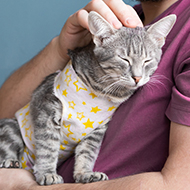The gene could support obesity research across species.
A genetic study into Labrador retrievers has revealed an obesity-related gene which could also influence obesity in humans.
The research team, from the University of Cambridge, suggest that this genetic link between Labrador retrievers and humans could provide a useful target for obesity research in both species.
Although it is influenced by biological and environmental factors, obesity is generally considered to be a heritable condition. However the research team says that, despite 40-60 per cent of pet dogs being diagnosed with obesity, the genetic basis of canine obesity is poorly understood.
In human research, despite numerous genetic loci being identified, the mechanisms behind the associations are considered challenging.
The genetic link between dogs and humans was identified during a genome-wide association study of 241 Labrador retrievers. Labrador retrievers are considered to be particularly prone to obesity, believed to be due to complex inheritance patterns.
With a cross-species approach, researchers identified five genes that were linked to obesity in both dogs and humans. DENND1B demonstrated the strongest genetic association.
The gene affects the brain pathway responsible for regulating energy balance and appetite. This in turn influences body condition score (BCS) as well as body weight.
DENND1B was found to be highly conserved across both species, with strong similarities found between the gene in Labrador retrievers and the gene in humans.
Previous research into DENND1B in humans had found links between the gene variants and body mass index. Researchers also identified a rare and harmful mutation which appeared to disrupt energy regulation in a human with severe obesity.
However, in dogs, the risk for obesity was also found to be influenced in part by eating behaviour. Researchers say that this highlights the significance of gene-environment interactions, reinforcing human studies linking food abundance and heightened appetite to increased obesity risk.
The research team says that the findings of their project not only reveal the gene’s potential as a cross-species research target, but also highlight how non-traditional animal models could be used to study complex diseases.
Dr Alyce McClellan, of the University of Cambridge, said: “These genes are not immediately obvious targets for weight-loss drugs, because they control many other key biological processes in the body that should not be interfered with.
"Nevertheless, the results emphasise the importance of fundamental brain pathways in controlling appetite and body weight,”
The full study can be found in the journal Science.
Image © Shutterstock



 RCVS Knowledge has called on vet practices to audit their post-operative neutering outcomes.
RCVS Knowledge has called on vet practices to audit their post-operative neutering outcomes.